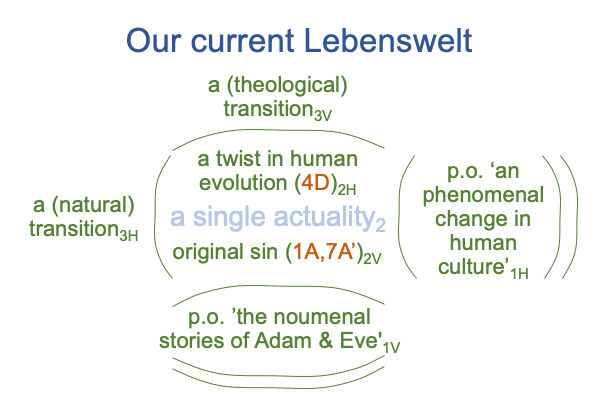0093 Chapter seven (A’) traces the history of original sin and completes the single actuality2, knitting human evolution2H(4D) to interpretation of Scripture2V (1A) and the doctrine of original sin2V (7A’).
0094 Here is a picture.

0095 Saint Paul, in his letters to the Corinthians and to the Romans, calls this interscope into being. The elements are fuzzy. The natural transition is not clear. It is implied.
0096 Saint Augustine clarifies the theological transition. In doing so, he posits a natural transition, whereby the rebellion of Adam and Eve passes to all humankind. Original sin passes to all humanity through direct descent from Adam and Eve. Why? Procreation is bound to desire. Desire is now subject (through Adam and Eve) to concupiscence, which transliterates into “being with Cupid, the love child of Mars, the god of war, and Venus, the goddess of love”.
Yes, that sounds a tad rebellious. With friends like Cupid, who need enemies? We can can get in trouble on our own, when we are subject to concupiscence.
Amazingly, Augustine’s position turns out to be unwittingly scientific. It is so scientific as to be debunked, sixteen centuries later, by modern genetics.
0097 So, the stories of Adam and Eve do not describe a de-novo creation of humans. Instead, the potential of these stories1V underlies Augustine’s doctrine of original sin2V as it is held, in the single actuality of our current Lebenswelt2, in contact with a twist in human evolution2H, that Haarsma is not aware of.
0098 In fact, at this moment, no modern anthropologist is aware of the hypothesis of the first singularity2H, arising from the potential of a phenomenal change in one Neolithic culture, manifesting as the Ubaid culture of southern Mesopotamia1H.
Why?
Semiotics is not the same as science.
